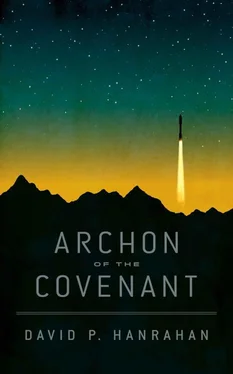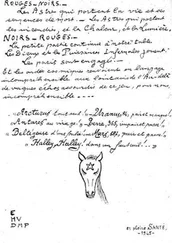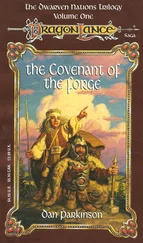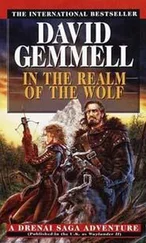Gilberto took the sample out and ran over to a mobile tray table set up by the free weights. On the top was a complicated immunoassay. Gilberto took the vial and loaded it into an empty cylinder on the assay and activated the test from a laptop on the tray table. As the cylinders spun and whirred around the assay, Gilberto reviewed the results from a scatterplot on his laptop.
The girl wondered aloud what the noise was outside the door. She looked at Anna and Terrence and smiled. Anna rubbed the saline from her cheeks.
Gilberto looked around the dusty gym. In the rush, they managed to grab just a few things: the assay, the secondary cooler, a few cans of food, one jug of water, and three blankets. As the cylinders spun around the assay, Gilberto began to think about how they’d get out. And what they would do if they did. He looked around the gym. No way out except through the airlock.
The assay beeped three times and came to a halt. The loaded cylinder lit a green light on the clasp and the scatterplot blinked “NON-REACTIVE.” Gilberto opened the cooler and removed four syringes. He turned to Anna and Terrence.
“It works.”
DDC39 rolled along the broken I-10, headways into a warm air monsoon. The rain streamed down the tri-axel and puddled in the weathered cracks of the highway asphalt. It drove on and reached a large obstruction — a series of crash barriers stacked like a castle wall, filled with stagnant water. It scanned the periphery, pulsing once — nothing. As it drove around the side of the massive wall, DDC39 scanned a sign in the distance: “Marana High School.” Zooming in, it found the high school football field, surrounded by razor wire. There was a pile of desiccated corpses at the 50-yard line.
When the plague reached its peak, the municipalities, at odds with the federal government, took extreme measures to try and contain the spread of the virus, which was still thought to be passed from lung to lung. Volunteer posses donned hazmat suits, coerced from biotech firms, and went door to door with rifles. There was a simple eye check at that time. If your pupil tracked a penlight, you were given paper breathers and told to stay inside. If it didn’t track, you were “rescued” and taken for treatment. Families were told to call a hotline for information. But the lines went dead quickly. And no one dared venture too far from their home. When you walked away with the hazmat posse, that was the last you’d see of your family, and probably the last time your cognition processed memories of them.
You wound up in a containment area. Sometimes it was an indoor gym. Sometimes it was a tent encampment. Towards the end, it wound up being scrapyards, golf courses, the zoo. At the peak of hysteria, Tucson hazmat posses were dumping semi trailers into the Pima Air and Space Museum, lined with a massive chain-link fence. 18-wheeler cargo holds would be parked up against the B-36 Peacemaker, filled with grandmothers, professors, lacrosse players — and a pallet of bread. Varying levels of sanity, pounding on the aluminum walls. They’d hear shouting next to them, in the darkness, unaware that a whole retirement community was desperately clawing at the locked tour bus windows right next door. Some broke out. Eventually, their cortical tissue decayed and they went wild, flailing at the locked enclosures. They broke their hands on the locks and forced their way out. They’d urinate in their hands to parch the thirst of the blazing sun. Helghast of the Sonora. They who they were as humans, and carried with them the experience of being left to die. They lost their memories and gained a hatred towards those who still had their cognition. In the dry desert air, they’d inhale their first breaths in this new demented freedom. The glass windows of the WW2 bombers shone back and they looked up, confused and in awe. Some latent spark would fire deep. They’d crowd around the tattered landing gear, crawling up, and find themselves sliding into the pilot seat. The blank bombardiers of the new apocalypse.
Virus of the unthinking gods. But now a bell rang in the nether plains — a wailing signal unto the pale setting of annihilation. Within the sun bleached and scorched Sonoran wastes, there still beats the digital rhythm of this solitary entity. It wandered along the soil, the core of its own universe, passing through the ruination of cognition. A digital mystery sang from its napalm-filled belly. Its beacon cut through neurons misfiring MAOI into synapses, through the lives of the former titans. Words slipping through the incisors, arriving in the air as nonsense. The iris, clouded by the sand of the desert floor. Here, the Earth coughs and its own illness wanes.
DDC39 drove silently past the barriers, the monsoon having passed into the Catalinas. In the distance, Mt. Lemmon was crowning through the high clouds. The rain soaked soil kicked up mud splattering on the tri-axel. Cyanobacterial crust. The sun was setting and lit the sky like The Pillars of Creation. Like an interstellar nebula — the remains of a Sonoran supernova. DDC39 pulled off the highway and onto Tangerine Road. It pinged the periphery of the off-ramp and surrounding berms. A retirement home shuttle, burned out, was on the side of the road. Various bones and luggage were strewn about the berm. DDC39 drove along the dirt-swept road, past Trico Electric — a relatively well-preserved corporate complex. The tri-axel automaton pinged the outer walls. No signs of cortical activity. Cars encircled the front doors of the building like some old wagon enclosure on the prairie.
The sentinel picked up speed on the more desolate stretches, passing a ramshackle nursery — a row of withered palm trees in their barrels, knocked over at the fence line. As the sentinel passed, a lone revin crawled from the broken window of the nursery and raced along the berm. A gray haired male clothed in a rain tarp. It limped along on a compound fractured leg — the bone protruding from its shin. The revin cried out with each step on the wounded leg. DDC39 slowed and craned its radial observation arm around. A ping. No cortical activity. DDC39 shifted into a higher gear and kept along Tangerine. The crying, hobbled revin fading into the distance. It raised a blood-splattered hammer from behind its back and tossed it down the street towards DDC39 — the tool landing in the asphalt and softly clanking in the distance.
DDC39 continued on this desolate road, scanning the odd boarded building and hollowed out hovels of the abandoned stretch. There was a car filled with a dead family, physically unharmed — peaceful in their decay. There was a half-finished cryogenics lab — the construction crane stopped with a beam still in the air. A roadside billboard read: “Hope in Stasis.” A mile down the road, faded and scatted fliers littered the intersection. The little orange pamphlets outlined a list of instructions on in-home quarantine. The last imperative read: “If you show any symptoms, immediately leave and head for a containment zone.” The disease was still not understood at the time of the flier.
As the sentinel sped east along the cracked roadway, the signs of former human civilization faded and the Sonoran fauna increased in density in and around the berm. Brittlebrush and burroweed cracked into the lanes. Honeysuckle bloomed through the desert broom on the road’s edge. Spiny ocotillo craned in between Creosote bush. Blue palo verdes shot out sideways through spiny desert mesquites. All of this steady growth overtaking signs of mankind. A mailbox lay tilted in a clump of staghorn cholla — one of the thorned arms clasping a weathered and faded envelope. The decline of man in the desert drastically reduced the consumption of water from the natural aquifers in the bedrock — the water level now raising back to just below the surface. In the outskirts of West Tucson, small swamps suddenly reappeared where once they flourished, hundreds of years ago.
Читать дальше












